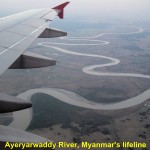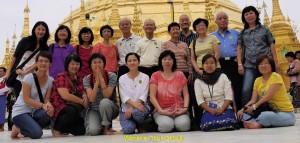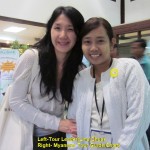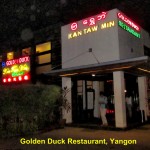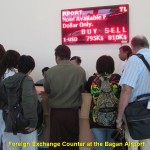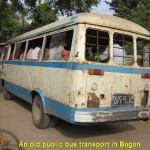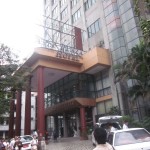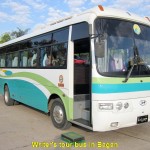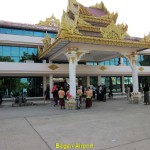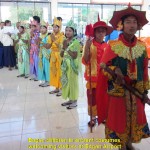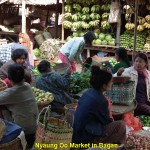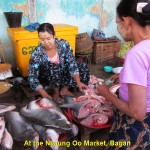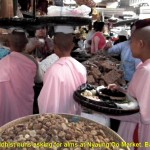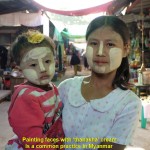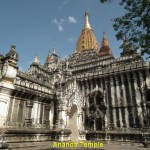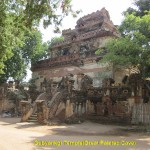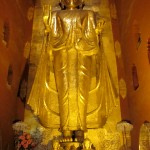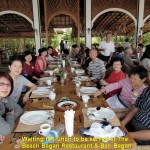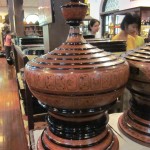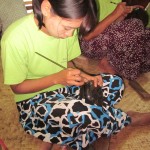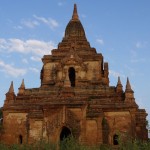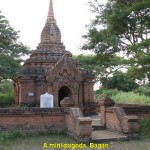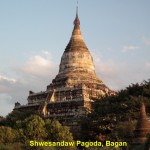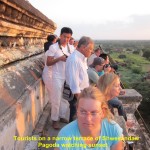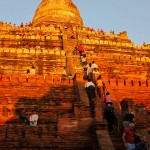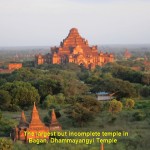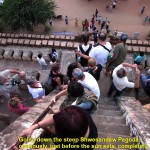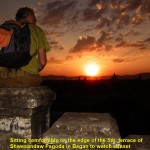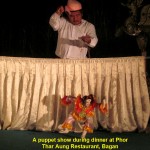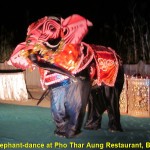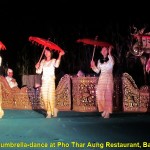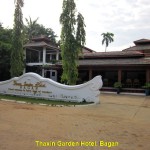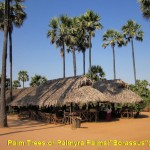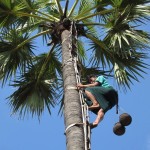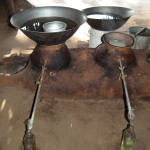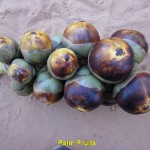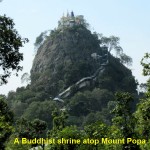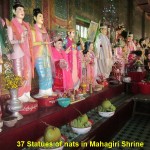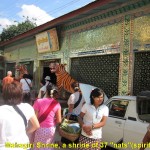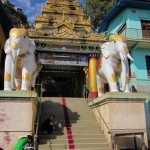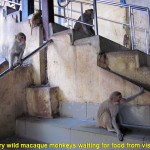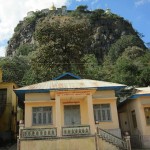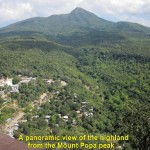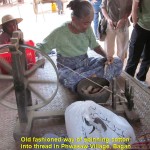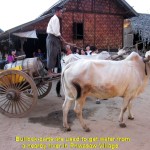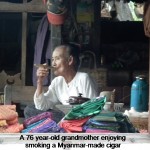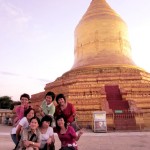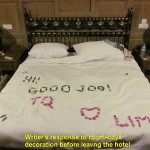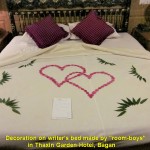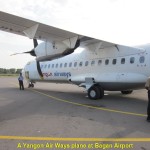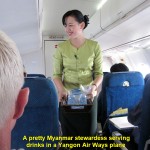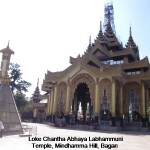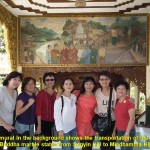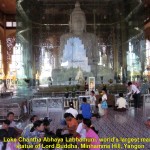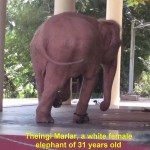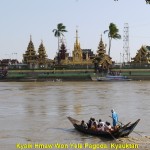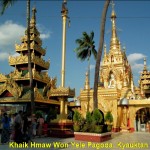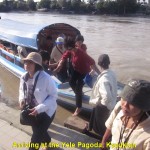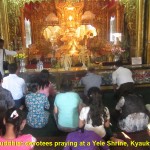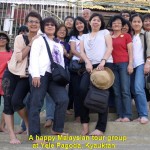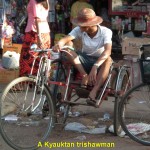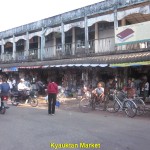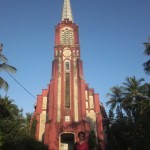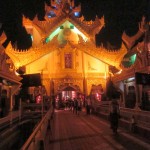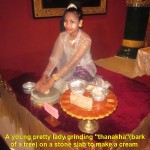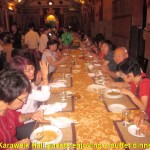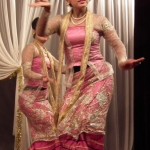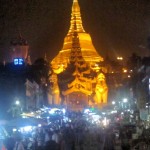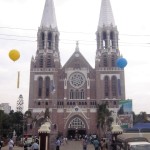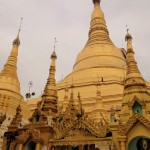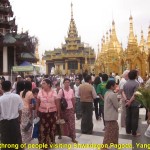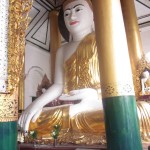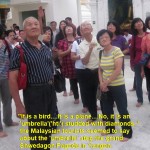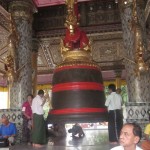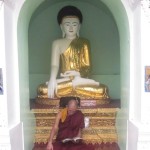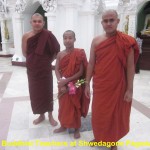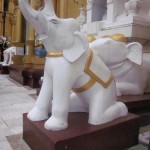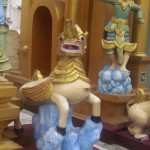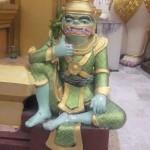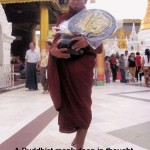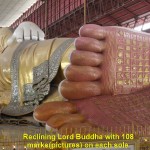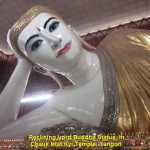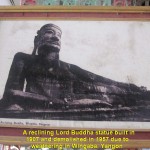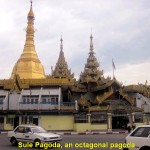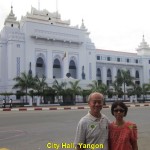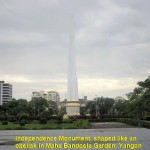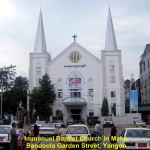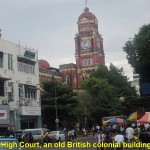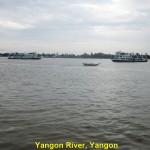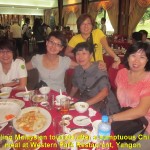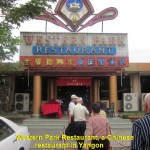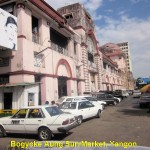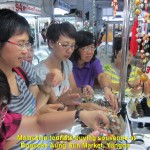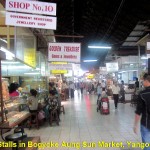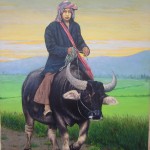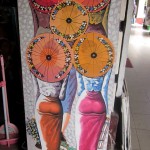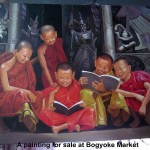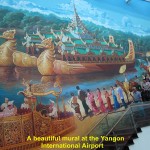Myanmar Travel I
Myanmar Travel I
Myanmar
Introduction
Myanmar is a country surrounded by Thailand in the east, India in the west, China in the north and Gulf of Martaban in the south. The main river, River Ayeryarwaddy(1,348 km), flows from the mountainous region in the north to the Gulf of Martaban in the south where it forms a large fertile delta that is suitable for rice cultivation.
The river is Myanmar’s most important commercial waterway which is navigable from Hinthada in the south to Bhamo in the north throughout the year, a distance of about 1,080 km.
The growth of Myanmar’s economy is slow due to political turmoil since the military junta took over the government in 1962 and the economic sanctions imposed by the United Nations. Consequently, lots of her people are living in poverty.
Myanmar has a population of over 60 millions, including 8 main different ethnic groups, viz. Bamar(68%), Kachin, Kayah, Kayin, Chin, Mon, Rackhine and Shan.
Mayanmar people are well-known for their hospitality, honesty and simplicity. 89% of them are Buddhists, 4% Christians, 4% Muslims, 1% Hindus and the rest believing in other religions. As majority of the population believe in Buddhism, Buddhist temples and pagodas can be seen everywhere in the country and have become a main tourist attraction.
Friends’ Invitation
After coming back from the Japan trip in September(2011), recently, my wife and I were invited by some friends to join them in a Myanmar tour. As we had never travelled with them to any foreign country before, we were glad to accept their invitation.
Day 1 Wednesday 30 November 2011
Departure for Myanmar
Tour Leader and Tour Guide
So, on 30 Nov 2011, 14 of us left Kluang(my hometown) in Johor with a tour leader, Lina Chua, from a local travel agency, Chia Sin Travel Company, by bus to the Kuala Lumpur International Airport(KLIA) in Sepang.
On arrival at the airport, we were joined by amother two persons from Penang. Together we checked in and at 3.40 p.m. we were on our way to Yangon in Myanmar on a budget airline of Air Asia.
After a 2 hour flight, we touched down safely at the Yangon International Airport. Then we were welcomed by a local lady, Chan, who would be our guide for the 5-day tour in Myanmar. We were glad that she could speak English, fluently.
Money Exchange
At the airport we exchanged US dollars for the local currency known as kyats(pronounced as “chats”). The rate at that time was 1 US dollar in exchange for 795 kyats. But we had to use a single, clean and less-creased 100 US dollar note to get that rate. So, for a single US100-dollar note, we would get 79,500 kyats. It did not make any sense to us, foreigners, when we were told that we would get slightly less kyats, if we used US dollar notes in smaller denominations. Luckily, most of us had the 100 US dollar-notes ready, and happily exchanged for the highest rate.
Right Hand-Side Drive Roads
Then we left the airport and boarded a tour bus driven by a Myanmar, Khin Kyaw. He had an assistant, Myat Thu. As the bus was moving in the Yangon streets, I was surprised to note that the bus was moving forward on the right side of the road and the driver’s steering-wheel was on the right. When asked, our tour guide explained that the way Myanmar vehicles had to be driven on the right side of the roads was decided many years ago by a head of the state after he had consulted an astrologer.
Golden Duck Restaurant
Soon we arrived at a restaurant, Golden Duck Restaurant, in Yangon City and had a late dinner. Later, we stayed at an old hotel, Asia Plaza Hotel, in the downtown.
Day 2 Thursday 1 December 2011
Departure for Bagan
After a good night sleep and breakfast at Asia Plaza Hotel, we left for the airport and flew to Bagan at 6.30 a.m.. An hour later, we arrived at the Bagan airport where we were warmly welcomed by young boys and girls dressed in ancient costumes. Walking out of the airport building, we were pleasantly surprised by a young couple dancing away to the accompaniment of a local romantic music played by a young band.
Nyaung Oo Market, Bagan
Then we boarded a bus which was a good one driven by a Myanmar, Htun Zaw. His assistant was Kyaw Win Soe. The first place Htun Zaw brought us was a busy village market in Nyaung Oo in Bagan. At the market, there were many vendors selling all kinds of vegetables, freshwater fish, flowers, fruits, groceries, souvenirs and dried seafood, to name a few.
Thanakha Cream
We noticed that most of the vendors were women and the local people, especially the females, liked to paint their faces in different patterns with a yellowish cream. The cream is obtained by grinding a bark(thanakha) on a stone-slab. According to our guide, it has many uses, for examples, it is used as a cosmetic, for making their skin smooth and as a sun-block. Besides, it has some medicinal values.
Moving about at the market was not easy, as the vendors’ produce and goods overflowed onto the crowded walkway.
Buddhist Nuns
Later, we were surprised to see a few Buddhist nuns with shaven heads and in pink robes appeared. They were carrying a shallow tray and bowl to collect alms from generous vendors.
Shwezigone Pagoda, Bagan
After visiting the market, we left for the Bagan’s largest pagoda, Shiwezigone Pagoda. Built by King Anawratha and completed by King Kyansitta in the 11th. century, the large gold-gilded bell-shaped pagoda houses a holy tooth, collar-bone and frontlet of Lord Buddha that were donated by a king of Ceylon as a gift to King Anawratha. Glazed plaques can be seen round its base showing scenes that depict Lord Buddha’s life. Small rest-houses and shrines that house statues of Lord Buddha surrounds the large pagoda.
Before entering the pagoda compound, we had to take off our shoes and socks. While going round and admiring the pagoda’s beauty in the compound, we had to watch out for pigeons’ excreta on the cemented ground.
Reflection of the Shwezigone Pagoda Top
At the back of the pagoda, I saw a small group of people talking, excitedly. A few of them knelt down in front of a small pool of clear water. One of them shouted, excitedly, “I see it! I can see the reflection of the top of the pagoda in the water.” Then I tried my luck. Yes, I could see it too. But nobody knew the significance of seeing the reflection.
Gubyaukgyi Temple(Great Painted Cave)
Later, we went to a small temple near Wetkyi-in Village. Known as Gubyaukgyi Temple(“Great Painted Cave”), it was built by King Kyansitthar in the early 13th. Century.
At the entrance of the old temple, a caretaker told us not to take photographs inside as the flash might damage the paintings. Although it was slightly dark inside , we could still see faded coloured paintings on the walls and ceilings with scenes that were supposed to depict the Lord Buddha’s life. I noticed that some layers of the wall-plasters with paintings were missing. They could have been stolen by some looters. In the middle of the temple there was a small room, but the statue of Lord Buddha which was supposed to be there had disappeared.
Ananda Temple
Having seen those exquisite paintings in Gubyankgi Temple, we left and went to another temple which is claimed to be the most beautiful one in Bagan. It is known as Ananda Temple. Built in 1091 by King Kyanzittha, it is 51m high and houses four giant standing statues of Lord Buddha, each about 9.5 m high and facing a cardinal direction, viz. East, West, North and South. In 1975, a strong earthquake destroyed two of them that were facing East and West. Later, they were replaced by new ones.
The temple was built in the Mon and Indian styled architecture. On top of the temple is a large pagoda resting on several terraces adorned with glazed plaques showing scenes that depict the life of Lord Buddha. In 1990, the pagoda was gilded to mark its 900th. anniversary.
The Beach Bagan Restaurant
When it was lunch time, we left for a restaurant on a bank of the wide Ayeyarwaddy River. It is called “The Beach Bagan Restaurant”. On the way to the restaurant, we saw many large and small ancient pagodas. Many of them have been restored with the help of money from generous donors. While relishing our meal at the riverside reataurant, we enjoyed looking at the river scenery and watching a traditional dance.
Lacquerware Factory
After that simple meal, we went to a small lacquerware-making factory. On arrival at the factory, we watched workers using bamboo strips to make all kinds of containers which were then lacquered and painted. It is a laborious process but each finished product is a masterpiece. Then we entered a room where the finished products were displayed for sale. As their prices were not cheap, none of us bought any of them.
Horse-Drawn Carts
In the evening, we sat on horse-drawn carts and travelled on bumpy and dusty roads in the Bagan plain to see lots of old pagodas and temples that were built in the 11th., 12th. and 13th. Centuries. They were of different sizes. The larger ones were built by kings of the Pagan Dynasty whereas the smaller ones by their wealthy subjects.
As most of the ruined ones were restored with different materials, their original shapes were changed, a golf course, paved highway and 61-metre watchtower were built in the pagoda area, the UNESCO has refused to designate the place as a world heritage site.
Shwesandaw Pagoda
Soon, we all met at a large pagoda, Shwesandaw Pagoda. Built by King Anawratha after his conquest of Thaton in 1057 to house some Lord Buddha’s hair taken from Thaton, the Shwesandaw Pagoda is bell-shaped with an “umbrella” or “hti” at its top. It rests on top of two octagonal bases that are on a series of five recessed terraces.
Shwesandaw Pagoda Climb
Shwesandaw Pagoda is a good place to watch the sunset. As we wanted to watch it from a high level of the pagoda, we had to take off our shoes and socks and climbed up its steps. The climb was steep and dangerous. Tourists had to hold onto the railing on the right-hand side and moved up the steps, slowly and carefully. As I was quite impatient, I climbed up the steps on the left-hand side without a railing to hold onto. With my body bending low and holding the steps firmly, I climbed up with ease. But in the midway, I almost fell backward when I felt the bag I was carrying on my back was getting heavy. Fortunately, I reacted fast before the mishap happened.
Pagodas and Temples in Bagan Plain
Finally, I reached the highest terrace of Shwesandaw Pagoda which was already crowded with sunset-watchers. Walking around the terrace, I saw hundreds of large and small pagodas and temples near and far in plain.
It is believed that there were over 5,000 of them there during the great and prosperous Pagan Period(11th. – 13th. Centuries). But when a strong earthquake struck in 1975 in Bagan, many were destroyed and about 2,200 were left.
As I was looking in the distance, there was one temple, the largest, that caught my attention. Known as Dhammayangyi Temple, it was built by King Narathu in 1170. The king came to power by assassinating his father and elder brother. To atone for his sin, he built the temple. While the temple was under construction, he made sure that the masons placed the bricks very close to each other so that a needle could not go in between them. Consequently, he was assassinated by some unhappy masons. Since then the temple is left incomplete.
Sunset
Having seen enough of the ancient pagodas and temples in the Bagan plain, I stood facing west to watch the sun slowly descending. It was a breathtaking sight. As it was going down, the sky changed colours from blue, yellow, orange and then red. When the sun had disappeared behind some hills in the distance, the clear sky was still bright.
Then I began to go down the pagoda. As most of them held onto the railing to get down, slowly and safely, I decided to use the “fast lane” again. Remembering the mistake I had made earlier, I placed my bag in front of me that time and moved backward down the steps, slowly and carefully, with my front body as close to the steps as possible.
When we reached the bottom of Shwesandaw Pagoda, the sky was getting dark. We boarded our bus and left the place for dinner at a restaurant, Pho Thar Aung Restaurant. As we were having dinner in the dark open air, we watched a cultural show that showcased the local traditional dances. Besides, there was a puppet show.
After that simple local meal, we left for a hotel, Thaxin Garden Hotel, where we retired for the night.
Day 3 Friday 2 December 2011
Palm Farm
On the following morning we left the and travelled to Mount Popa which is 50 km south-east of Bagan. On the way, we stopped for a short while at a palm farm.
At the farm, we watched an elderly man extracting oil from peanuts with the help of a white cow which went round a wooden mill grinding them. Then some of us asked for his permission to mill the peanuts. He was glad to let us try the milling under his suprvision.
Later, we watched a young man climbing up a tall palm tree with the help of a ladder. He wanted to collect round-bottomed black pots containing some palm flower-juice. The juice could be used to make crude sugar(jaggery sugar) and alcoholic beverage.
In a palm leaf-thatched long house, we saw two simple apparatuses that were used for distilling fermented palm flower juice. We also saw a woman boiling and heating the sweet palm flower juice until crude sugar or jaggery sugar was obtained.
The farmers harvested the palm fruits too. These fruits are brown and round. They are eaten either raw or roasted. The young jelly-like seeds in the fruits can also be eaten.
After watching all those interesting activities at the farm, we bought some of the products and continued our journey to Mount Popa which is 1,518 metres above sea-level.
Mount Popa
The last part of the journey to Mount Popa was slow and uncomfortable, as the road was narrow, winding, steep and in bad conditions. Besides, some parts of the road were half-closed for repair.
When we reached a spot which was three kilometres from a 737 metre-high hill, our bus stopped and our guide, Chan, asked us to get down and take photos of the hill. The hill is commonly known as Mount Popa and the local people called it Taung Kalat. It is actually a plug of the extinct volcano, Mount Popa.
The sight of the sheer-sided hill in the distance was awesome. It had some Buddhist and spirit(“nat”) shrines with spires on its peak. For one moment, I thought I was in a European country looking at a “castle” on a hill. After snapping a few photos, we went on.
Mahagiri Shrine
Soon, we arrived at the foot of the hill. Before we went up the hill, we entered a shrine, Mahagiri Shrine, where there were 37 brightly-painted statues of spirits(“nats”).
Before King Anawratha(1014-1077) introduced Theravada Buddhism in his Pagan Kingdom in Central Myanmar, the local people were worshipping more than 37 nats. According to the local people, these nats were human beings before their death. Some of them had connection with royalty and died of violent tragedies. As they were well-known, the local people worshipped them as nats.
When King Anawratha introduced the religion and banned his subjects from worshipping nats, totally, his subjects were unhappy. Later, he relented and allowed them to worship 37 nats designated by him.
These nats immortalized by the locals at the shrine are being worshipped by Myanmar people from near and far during the festivals held twice a year, one on the full moon in May/June and the other on the full moon in Nov/ December.
Mount Popa(Taung Kalat)
Coming out of the shrine, we began our way up Mount Popa(Taung Kalat) to see a Buddhist shrine on its summit. To reach the top we had to climb 777 steps. On the way up, we were greeted by wild hungry Macaque monkeys. They had a dirty habit of easing themselves on the steps. They were expecting peanuts and bananas from visitors. But, they felt very disappointed as none of us brought any for them. When we reached the 200th. step we had to take off our shoes and socks to climb up the remaining 577 soiled steps.
After a long and tiring climb, we reached the top where small shrines were built close to each other. Some were Buddhist and others were nats’. Many pilgrims go to the nat shrines to ask for prognosis for the future of their undertakings. The principal nat there is Pabe Maung Tint Dai(“Mr. Handsome, the blacksmith”).
From the top of the hill, we saw breathtaking views of the lowlands with some villages, and the lush highlands which were the remaining parts of the extinct volcano, Mount Popa.
Phwasaw Village
Two hours later, we left the holy hill, and descended to a restaurant which was not far from the hill. At the restaurant, we had a simple, traditional Myanmar meal for lunch. Then we left the restaurant and travelled for more than an hour before we reached a small village, Phwasaw Village, in Bagan.
The residents of the village lead a simple life with basic necessities: food, clothing and shelter. As they have no piped water, they have to use water-bullock-carts to get water from the Ayeryarwaddy River which is nearby. They earn their living by farming, cattle-breeding, spinning, weaving and producing lacquerware.
In the village, we were amused by an old skinny 76 year-old lady who was showing off her style of smoking a large, long locally-made cigar(cheroot) in her house. While she was puffing away with pleasure, she was holding a half-coconut shell for the ashes to fall into it. She felt pleased as we were watching her.
Lawakanada Pagoda
Later, we left the village with mixed feelings. We felt happy to see them friendly to us, but sad to see them living in poverty. We went to the last place of interest for the day, an old temple on a bank of Ayeryawaddy River.
The temple is known as Lawakanada Pagoda which was built in 1059 by King Anawratha to enshrine a Lord Buddha’s tooth. To enter its compound we had to take off our shoes and socks. We were glad that there were no droppings from birds and excreta from monkeys there. The pagoda looks large and magnificent. Its stupa that looks like the shape of an ice-cream bell is golden in colour. This place is a good place to watch sunset beyond the Ayeryawaddy River.
After that pagoda visit, we left for a restaurant on a river-side of Ayeryarwaddy River. When we arrived at the restaurant, it was already dark. We had a candle-light dinner in the open air. As the candles on our tables were burning they attracted insects. But the winged creatures became a nuisance as some fell onto our dishes. When the candles were removed by the waiters, we had a peaceful and enjoyable meal. After the dinner, we left the place for our hotel.
In High Spirit
As we were all in high spirit on the way to our hotel, we started singing together a few songs. On arrival, we entered our rooms and were pleasantly surprised to see our beds neatly and beautifully decorated with flower-petals and leaves. The hotel “room-boys” as they called themselves had done the decoration and written a note left on everybody’s bed thanking us for staying at their hotel. On the following morning, a few of us used the same petals and leaves and arranged them to thank them for cleaning our rooms.
Continued on Myanmar Travel II
Written by Choo Chaw, Kluang, Johor, Malaysia
Myanmar Travel II
Myanmar Travel II
Day 4 3 December 2011
Loke Chantha Abhaya Labhamuni(Largest Marble Statue of Lord Buddha)
After breakfast at Thaxin Garden Hotel, we left for the Bagan airport and flew by Yangon Airways to Yangon via Mandalay at 8.40 a.m.. On arrival at the Yangon airport at 10 a.m., we went to Mindhamma Hill to see the world’s largest marble statue of Lord Buddha. Known as Loke Chantha Abhaya Labhamuni, its height is 37 feet and weight 600 tons.
We had to donate 200 kyats, if we wanted to use our cameras to snap photos of the statue. It was difficult to get a good photo of it as it was in a large glass case that had reflections of the outside objects.
A stone-sculptor, U Taw Taw, found a large block of white marble in Sagyin Hill which is 21 miles north of Mandalay and donated it to the state. The block was 37 feet long, 24 feet wide and 11 feet thick. Then the state commissioned him and his sons to carve an image of Lord Buddha from the stone in 2000.
When it was partially done, the state took two months to transport it from Sagyin Hill to Mindhamma Hill in Yangon. Later, the statue was completely carved and placed on the hill on 10 August 2000. Since then it has been worshipped by Myanmar Buddhists. Now, it is a tourists’ attraction.
Before we left the hill, a few of us took a photo together with a large mural in the background. It shows Lord Buddha statue being transported from Sagyin Hill to Mindhamma Hill.
White Elephants in Royal Elephant Garden
Our next stop was the Royal Elephant Garden along Mindama Road near the large statue of Lord Buddha. In the garden, we saw two elephants. Theingi Marlar(31 years old) was a small female elephant in light pink and Yaza Gaha(15 years old) a male that was larger but its skin was pink and grey. Their legs were chained and they were moving about, restlessly , in a building with high roof. I was surprised that there was no white elephant to be seen there. Our tour guide then explained to us that an elephant in pink was considered as a white elephant.
According to a Myanmar belief, the appearance of a white elephant is a good omen for the nation as it brings peace, stability and prosperity, prevents dangers and hazards, and helps the nation to enjoy annual bumper harvests of rice. In the olden days, the kings pampered white elephants because they considered them as a symbol of royal power and prosperity.
Myanmar’s Longest Steel Bridge
Having seen the two poor creatures, we left and went to a restaurant, San Chuan Restaurant, for a delicious seafood lunch. After that satisfying meal we made an hour-journey from Yangon to Kyauktan which is 18 miles south-east of Yangon. Before reaching Kyauktan, we had to cross Mayanmar’s longest steel bridge over Yangon River near Thanlyin. Our tour-guide advised us not to take photos of the bridge for state security reasons. We saw some soldiers guarding the bridge and watching us passing by.
The road to Kyauktan was dusty, narrow and winding. We saw pick-up trucks overloaded with passengers. Some of them were standing outside the moving vehicles hanging, dangerously, onto them.
Kyaik Hmaw Won Yele Pagoda(Pagoda in the middle of a river)
Soon we arrived at Kyauktan, a riverine town. We took a ferry to an islet in the middle of Yangon River. Located on the islet was a Buddhist complex of pagodas, shrines and monastery. It was known as Kyaik Hmaw Won Yele Pagoda(Yayle Phaya Pagoda or “Pagoda in the middle of a river”). The first Yele Pagoda was built by King Zeyasana in the 3rd. century B.C.
Giant Catfish
Before we entered the holy place, we had to leave our shoes and socks in the ferry. While entering the holy place, we noticed that it was already crowded with visitors and pilgrims. The worshippers brought flowers, coconuts and bananas and offered them to their god when they prayed. Some visitors and pilgrims at the back of the holy place were seen throwing balls of food into the murky Yangon River. Lots of giant catfish surfaced and swallowed up the floating food which disappeared fast. The food was made of corns and wheat.
Kyauktan Market
Later, we took the same ferry back to the river-bank. Before we disembarked we had to find our shoes and socks in the ferry. When we were on land again, we visited a busy, dirty, old market in Kyauktan. There were shops and hawkers along a few roads leading to the market. Most of them were selling things that were required by local people for their daily needs, such as vegetables, fish, fruits and toiletries.
While walking along a road there, we came across an interesting hawker’s stall. It was selling betel quids, each containing a betel leaf that enclosed a piece of areca nut and some slaked lime. Consumers bought them for chewing. After chewing, they spat it out. Most of them, conveniently, spat onto the roadside and walkway, as the reddish liquid stained many parts of them. While walking along them, we tried not to step on it.
Sacred Heart Catholic Church, Kyauktan
On the way back to Yangon, we stopped at an old Catholic church, Sacred Heart Catholic Church, which is near Kyauktan Town. Built in the 18th. Century by a French missionary, it has an orphanage for boys who have lost their parents to illnesses or the harsh military regime. It is supported by generous foreign donors.
Chinatown in Yangon
It was already evening when we arrived at Yangon. We went to the town centre and visited Chinatown. Most of the Chinese in the city live here. They open up shops that normally sell gold and jewellery, clothes, electronic and electrical products, food, groceries, etc. The most interesting part of this Chinatown is roadside stalls and street vendors displaying their goods that spread onto the heavy traffic road. They sell vegetables, fruits, local and exotic food, clothes, toys, etc. It looks like a street night-market.
Karaweik Hall(Restaurant)
Having seen the busy Chinatown, we went to an unusual restaurant which is built in a shape of a large Mayanmar royal barge at a lake, Lake Kandawgyi. This beautiful golden barge was built in 1972. The restaurant on the barge is known as Karaweik Hall. It serves local, eastern, western and Chinese cuisine.
Before we entered the restaurant, we were well greeted by its smiling workers who were dressed in ancient traditional costumes. While we were in the restaurant we were awe-stricken by the beautiful carvings on the walls and ceilings that made the hall look like a royal dinning hall. Besides, it had a stage where traditional dances were performed for the customers.
As it was a buffet dinner at the restaurant, we savoured as many dishes as our dummies could take them. While sitting at a long table together and enjoying the dishes, we watched a series of traditional dances.
Shwedagon Pagoda at Night
After that splendid buffet dinner in Karaweik Hall, we left and went to a place to see the Myanmar most beautiful pagoda that is called Shwedagon Pagoda. As it was night time, we saw bright lights shinning on the pagoda revealing its golden magnificence from a distance. Then we left for our hotel, Asia Plaza Hotel, and would go back and visit the pagoda on the following morning.
Day 5 Sunday 4 December 2011
St. Mary’s Cathedral, Yangon
Day 5 was our last day of our tour in Myanmar and we had a few more places to visit in Yangon. After breakfast, we planned to visit Shwedagon Pagoda, Myanmar’s largest and most beautiful pagoda. On the way to the pagoda, we stopped for a short while in front of Myanmar’s largest cathedral, St. Mary’s Cathedral., which is in Bo Aung Kyaw Street. As it was not on our itinerary, we stayed on the bus, admired its architecture and watched Catholic followers entering the cathedral to celebrate its 100th. anniversary(1911-2011).
St. Mary’s Cathedral was designed by a Dutch architect, Jos Cuypers, and constructed in the Gothic architectural style under the supervision of Father Janzen, a Dutchman. It was completed in 1899 and dedicated to “Our Lady of Immaculate Conception” in 1911. Its façade consists of two spires and a belltower with a rose window in between them. It can accommodate 1,500 worshippers as its length is 291 feet and width 101 feet.
In 1930, an earthquake caused a little damage to the church, in WWII, the Allied bombing destroyed some stained window glasses and in 2008, the powerful Nargis Cyclone destroyed the window glasses again. This church is now on the Yangon City Heritage List.
Shwedagon Pagoda, Yangon
Then we continued our journey to Shwedagon Pagoda located on Singuttara Hill(51 m). We saw it on the previous night, but from outside.
When we arrived at the Shwedagon Pagoda Lift Tower in the late morning, we had to take off our shoes and socks. Then we took a lift for foreigners only to the second level and walked to the pagoda. Entering its compound, we were mesmerized, completely, by its beauty and immensity. Besides, we were amazed to see lots of people there.
The first Shwedagon Pagoda in Yangon was built over 2500 years ago(588 B.C.) when Lord Buddha was still alive. He gave 9 strands of his hair to two Myanmar’s first Buddhist brothers who visited him in India. When they went back to Yangon they built a 8-metre high pagoda to enshrine them. Since then many new pagodas were built to replace the old ones on the hill. Each time a new one was built, it was higher than the previous one.
The present pagoda was built to a height of 99 metres in the 18th. Century. A Mon queen, Shin Sawbu(1394-1472), was the first person to give gold equivalent to her weight to gild the pagoda. Since then, monarchs and their subjects followed the queen’s example. It is still practised today by generous Myanmar people.
The total weight of the gold that covers the pagoda now is estimated to be about 60 tons. Besides gold, diamonds, rubies, sapphires and other gemstones have been donated by worshippers. These gemstones adorn the upper part of the pagoda, especially the “umbrella” or “hti”. It is surprising to know that Myanmar people are devoted Buddhists and will donate gold and gemstones to beautify the pagoda.
Myanmar Astrology
Surrounding the base of Shwedagon Pagoda are eight mini-statues of Lord Buddha, each has a different animal statue below it. According to Myanmar astrology, the day a person was born determine his planetary post which is marked by an animal, as shown below:
|
Day of Birth |
Planetary Post |
|
Sunday |
Garuda |
|
Monday |
Tiger |
|
Tuesday |
Lion |
|
Wednesday(Morning) |
Tusked Elephant |
|
Wednesday(Afternoon) |
Tuskless Elephant |
|
Thursday |
Mouse |
|
Friday |
Guinea Pig |
|
Saturday |
Dragon/Serpent |
As I walked round the base, I saw people, young and old, pouring water onto Lord Buddha statues and the animal statues(representing the days they were born), praying and making a wish.
Maha Tissada Gandha Bell, Shwedagon Pagoda
Hanging in a beautiful pavilion near the pagoda is a large bell, Maha Tissada Gandha Bell, weighing 42 tons. Donated by King Tharrawarddy in 1841, the bell has 20 kg-gold plating on its upper part. Besides, there are several small pagodas, shrines and rest-halls with Lord Buddha statues around the Shwedagon Pagoda, and they are built close to each other. Painted statues of kneeling elephants, lions, ogres, serpents, spirits, etc. adorned the base of the large magnificent pagoda.
There were monks at the pagoda. Some were meditating in front of Lord Buddha statues and others went there for a visit. But there was one that caught my attention. That monk, deep in thought and holding an almsbowl and new fan, was walking very slowly in an anti-clockwise direction around the pagoda. As he was the only one doing that, I was wondering what his intention was.
Chauk Htat Kyi Temple, Yangon
After spending an hour or so at the Shwedagon Pagoda, we left for another holy place called Chauk Htat Kyi in Wingaba, Yangon. This temple houses a 65 metre long statue of Lord Buddha in a relaxing and reclining position. He is lying on his right side with his head resting on his right palm. This statue shows that Lord Buddha was slim and young. Besides, he had white complexion, bright red lips, eyes with blue eye-shadow and long eye-lashes, and eyebrows that were long, narrow and dark black.
Lord Buddha’s Sole Marks
On each sole of the statue, there are 108 marks which are represented by pictures belonging to 3 groups or “worlds”, viz. animate, inanimate and conditioned. An information-board near the statue says that Lord Buddha was greater than the 3 “worlds” and explains that those marks became apparent right from Lord Buddha’s birth. When 8 out of 108 royal astrologers were asked to comment on the baby’s 108 marks, 7 predicted that the child would either become the Buddha or Cakkavatti(Universal Monarch). Only Sudata Kondamma, the youngest among them, made a single prediction that the royal child was destined to be the Buddha. He gave the reason that the child had an image of Cakkavati on each sole and was a personage superior to Cakkhavatti. So he could only be the Buddha.
The reclining Lord Buddha mentioned above was built in 1966. The original one which looked quite different from the present one was built by a local rich man, Sir Hpo Thar, in 1907. Later, the old statue suffered serious damages due to long exposure to weathering in the open. In 1957, it was demolished and replaced by the present one in 1966.
Colonial Buildings
Having visited the reclining Lord Buddha, we went to the city centre in Kyauktada Township. On arrival, we saw a few landmarks, such as City Hall(in Bo Aung Kyaw Road), Sule Pagoda(in Sule Pagoda Road), Independence Monument(in Mahar Bandoola Garden), High Court(in Pansodan Road)and Immanuel Baptist Church(in Maha Bandoola Garden Street). Some of these buildings, like the City Hall, Main Post Office and High Court were built during the British rule(1824-1948) and their architectures have the British colonial influence.
Yangon River
Then we left the place and went to the Yangon River. It flows from Yangon to the Gulf of Martaban. As it is navigable by ocean-vessels, it plays an important role in the Myanmar economy. Besides, the river is a source of water for rice cultivation.
After half an hour of watching some riverine activities and enjoying the views, we went for lunch at a restaurant, Western Park Restaurant, and were treated to a sumptuous lunch. After that satisfying meal, we went to visit the last place in Yangon City before we left for home in Malaysia.
Bogyoke Aung Sun Market
The place we visited was the largest market in Myanmar. When it was built in 1926, it was named after a British, James George Scott. It was commonly known as Scott Market then. But when Myanmar gained independence in 1948, its name was changed to the name of a Myanmar general, Bogyoke Aung Sun. So the market is known as Bogyoke Aung Sun Market since then. This two storey-market houses a few hundreds of stalls, selling arts, handicrafts, antique, foodstuffs, clothes, jewellery, gemstones, etc.
As some of us in our tour group wanted to buy something for our loved ones and friends back home, we asked our tour-guide, Chan, to recommend souvenirs for them. After an hour of browsing and purchasing at some stalls, we left the well-known market for the Yangon International Airport.
Back Home
Arriving at the airport we thanked and bade farewell to our wonderful tour guide, Chan. Then we checked in at the airport. At 5.15 p.m., we took off on an Air Asia plane bidding farewell to Myanmar, a lovely, friendly but poor country. 2½ hours later, we landed safely at KLIA, Sepang, Malaysia, and were glad to be home again.
Well, that is another travel adventure of mine and I hope you like reading it.
Acknowledgement
My wife and I would like to thank the travel agency, Chia Sin Travel Service Sdn. Bhd., Kluang, Johor, Malaysia, for the excellent services it had provided, including transport, accommodation, and food. We also like to thank our tour-leader, Lina Chua, for taking care of us during the tour. Besides, we would like to thank our experienced, knowledgeable and good-natured Myanmar English-speaking tour guide, Ms. Khin Nyein Chan, the careful Yangon and Bagan bus-drivers and their helpful assistants for making our tour in Myanmar enjoyable and memorable. Last but not least, we would like to thank all our tour members for their friendliness and excellent companionship.
Written by: Choo Chaw, Kluang, Johor, Malaysia


